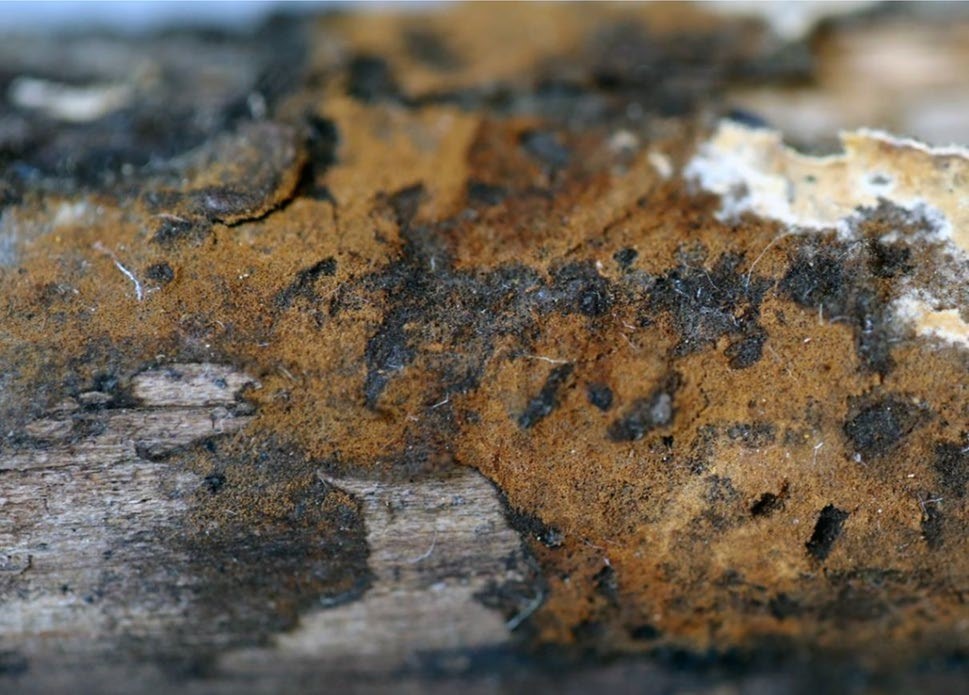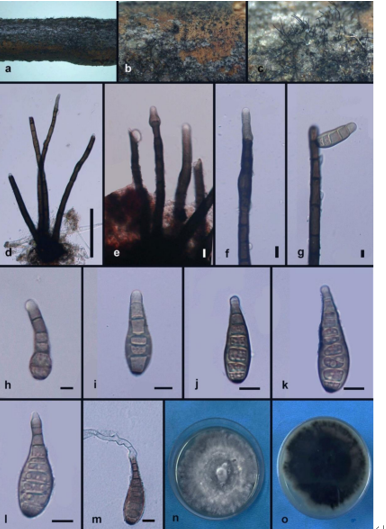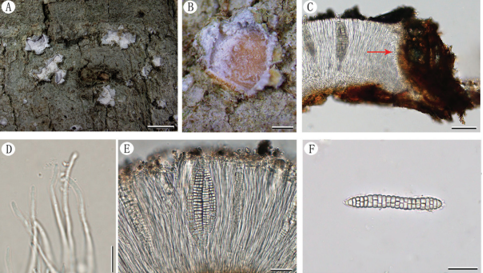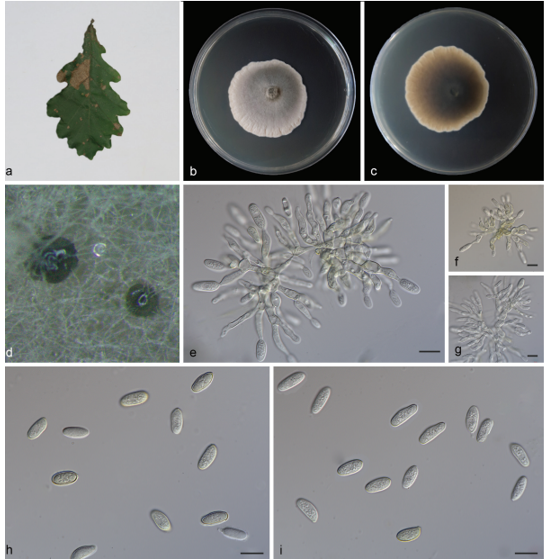Tomentella changbaiensis H.S. Yuan, X. Lu & Y.C. Dai 2020
Index Fungorum number: IF555725; Facesoffungi number: FoF 05609
Holotype: CHINA, Jilin Province, Changbaishan Nature Reserve, on fallen angiosperm branch, 10 August 2016, Yuan 11496 (IFP 019257, holotype), Yuan 11477 (IFP 019258).
Morphological description
Basidiocarps annual, resupinate, duplex, easily separable from the substrate, arachnoid, without odour or taste when fresh, 0.5–1 mm thick, continuous. Hymenophoral surface smooth, pale brown to dark brown (6D8–6F7) and turning lighter than subiculum when dry. Sterile margin often indeterminate, byssoid, lighter than hymenophore, pale brown (6D8). Rhizomorphs absent. Subicular hyphae monomitic; generative hyphae clamped, thick-walled, occasionally branched, 3–6 μm diam, without encrustation, pale brown in KOH, cyanophilous, inamyloid. Subhymenial hyphae clamped, thin-walled, occasionally branched, 4–6 μm diam; hyphal cells short and inflated, pale brown in KOH, acyanophilous, inamyloid. Cystidia absent. Basidia 20–55 μm long and 5–11 μm diam at apex, 3–5.5 μm at base, with a clamp connection at base, utriform, not stalked, sinuous, without transverse septa, pale brown in KOH and in distilled water, 4-sterigmate; sterigmata 4–5.5 μm long and 2.5–3 μm diam at base. Basidiospores thick-walled, (7.5–)8–9(–9.5) × (7–) 7.5–8.5(–9) μm, L = 8.45 μm, W = 7.83 μm, Q = 1.06–1.12 (n = 60/2), globose to subglobose in frontal and lateral views, echinulate, pale brown in KOH and distilled water, cyanophilous, inamyloid; echinuli usually isolated, sometimes grouped in 2 or more, up to 1.5 μm long.
Habitat: On fallen angiosperm branch.
Distribution: In China.
GenBank Accession: ITS: MK211739, MK211738; LSU: MK446347, MK446346.
Notes: Tomentella bryophila and T. changbaiensis formed a clade in the phylogeny (Fig. 111). The former is similar to T. changbaiensis by having basidiocarps adherent to the substrate, the absence of rhizomorphs and cystidia, short and inflated subhymenial hyphal cells, utriform basidia and globose to subglobose basidiospores (Kõljalg 1996). However, T. bryophila differs from T. changbaiensis by having dark blonde to raw umber basidiocarps and encrusted subicular hyphae. T. pallidobrunnea resembles T. changbaiensis by pale brown to dark brown, mucedinoid or arachnoid and continuous basidiocarps adherent to the substrate, a byssoid sterile margin, short and inflated subhymenial hyphal cells, the absence of rhizomorphs and cystidia, and globose to subglobose basidiospores. However, T. pallidobrunnea can be distinguished by the pale brown sterile margin and clavate basidia.
Reference: Hai‑Sheng Yuan1,2· Xu Lu1,2 · Yu‑Cheng Dai3 ·

A basidiocarp of Tomentella changbaiensis (IFP 019257, holotype)









